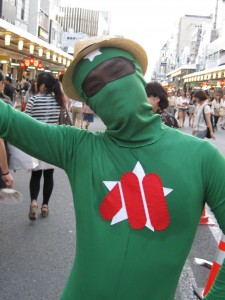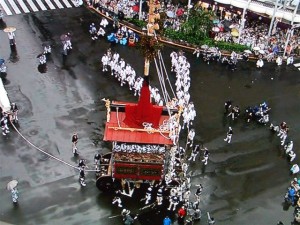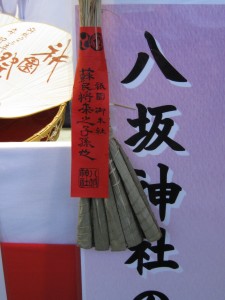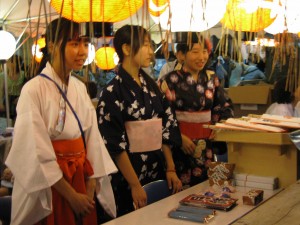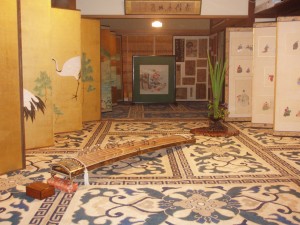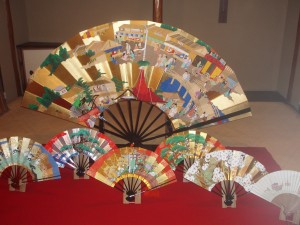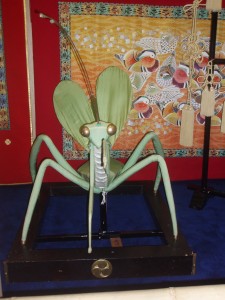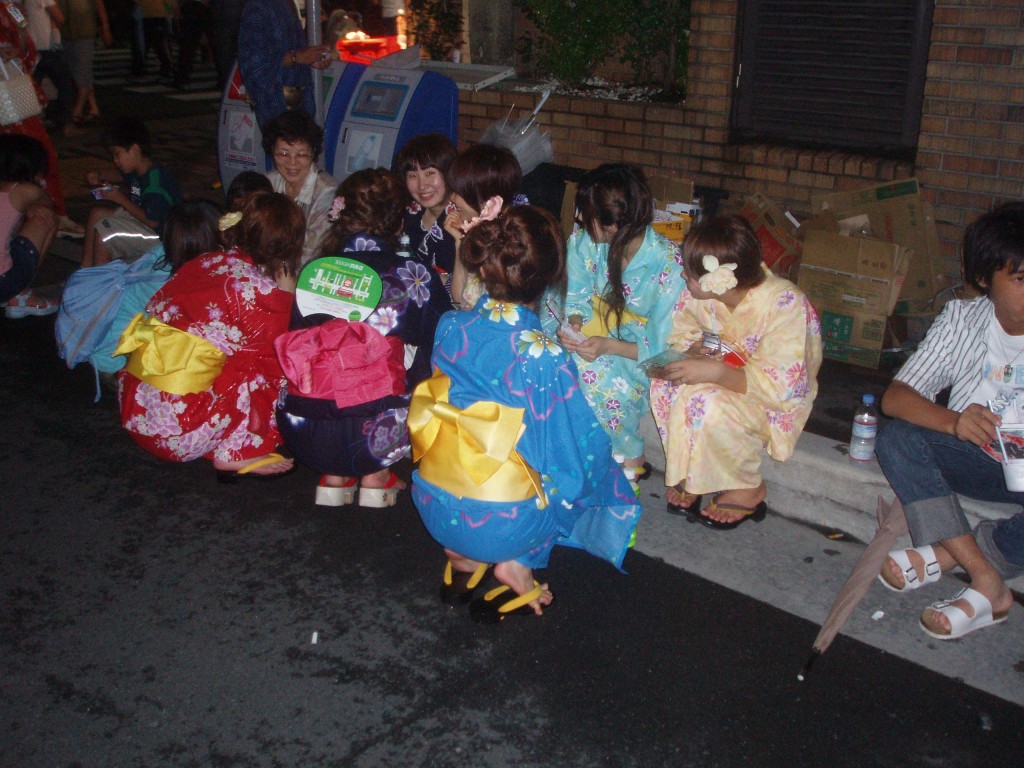Green Shinto supporter Paul Carty has introduced a fascinating article on ‘The Gion Shrine and the Gion Festival’ by Helen Chapin in Journal of the American Oriental Society vol. 54, no. 3 (1934). She suggests a phallic nature to the festival that has been suppressed in recent times. As in other cultures (notably India), the phallus together with its female equivalent (called ktesis by Chapin, but more usually yoni or vulva) were symbols of potency and vigour – in short, the life-force. As such they are an antidote to decay, disease and death.
phallus together with its female equivalent (called ktesis by Chapin, but more usually yoni or vulva) were symbols of potency and vigour – in short, the life-force. As such they are an antidote to decay, disease and death.
Chapin’s article makes the following points.
1) Yasaka Shrine started life as a Buddhist institution called Gion Kanshin-in. It worshipped an imported deity called Gozu Tenno (the Ox-head king), which had been introduced in the mid-seventh century by an Indian immigrant (who is known as Hodo in Japanese).
2) The festival can be traced back to 970 when a ceremony was held to expel demons. Gion Kanshin-in may have been chosen to host the event because of the phallic connotation of the ox (rather obvious if you think of a bull’s appendage). The festival ceased during the Sengoku Era (Feuding Factions Period), but was revived by Nobunaga in the sixteenth century and has continued to the present.
3) At some time in or before the early eleventh century, the kami Susanoo was introduced to the temple, perhaps as a protector and perhaps by incomers from the Izumo area where Susanoo worship originated. Though he is known as a storm-god, he’s also a kami of passion and romance because of his marriage with a princess he rescued from a fearful eight-headed monster.

naginata (long spear)
The goshintai (spirit-body) of Suanoo is a long spear (naginata), which Chapin identifies as phallic. You could say that compared with other goshintai, Susanoo has a long one! [When the Meiji government forced religious institutions to choose to be either Buddhist or Shinto, the former temple opted to be Yasaka Jinja with Susanoo supplanting Gozu Tenno.]
4) The festival was originally directed towards the phallic road gods known as sae no kami, who guarded the borders between settlements. It was their job to prevent the demons of disease from entering. The phallic orientation is represented by the enormous height of the hoko floats, which extend up to sixty feet into the air (telephone wires have to be specially cut to allow them to pass). The vulvic counterpart are the yama with their concave shape containing a pine tree and dolls. Hoko are pulled, and yama are carried.

Kakkyo yama float, with dolls that tell of a Chinese legend
5) As the festival developed into a showcase for the city’s crafts and goods, merchants took to displaying their treasures. They also took the opportunity to show the eligibility of their daughters by turning them out in stunning kimono with fancy hairstyles and elaborate obi. No doubt the phallic nature of the festival stimulated thoughts of coupling and marital union. Still today it’s a popular time for dating couples, and many of the city’s women dress up in their yukata best.
In Meiji times Japan’s fertility rites and phallic displays were systematically covered up in order not to appear ‘primitive’ or uncivilised to the outside world (and to Christians in particular). If Helen Chapin’s thesis about the origins is correct, one has to say that the associations have been all but erased over the past century. One question I’d like to have asked her: how does the hoko no chigo fit into her thesis? The cherubic ten-year old with painted face is chosen from the city’s merchant families and acts as page to the kami. As such he has to undergo a strict purification regime for weeks beforehand, and during the festival he takes a leading role by cutting the rope to start the procession. He could hardly be said to be representing phallicism, though the thought occurs to me that as he stands on the cusp of adolescence perhaps he represents the power of the life force, in the same way that an acorn develops into a mighty oak.
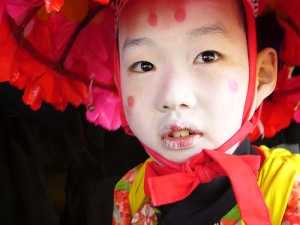
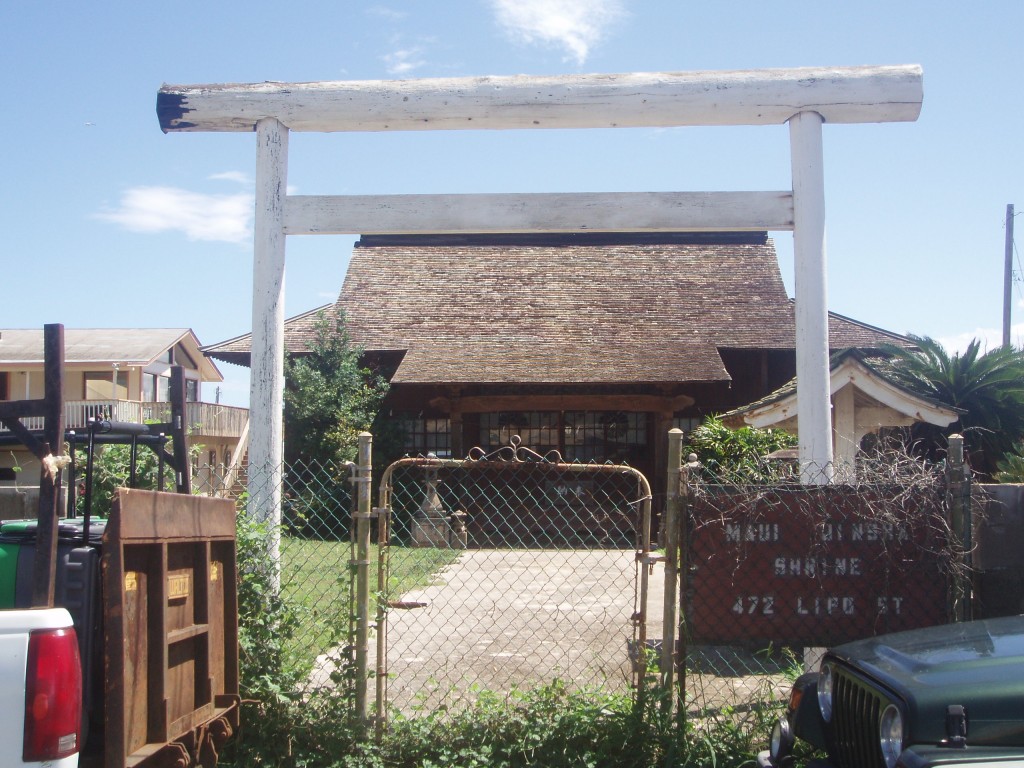

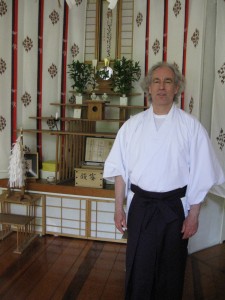
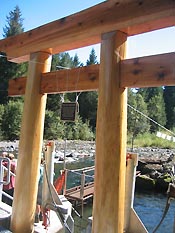
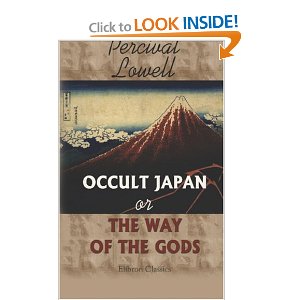
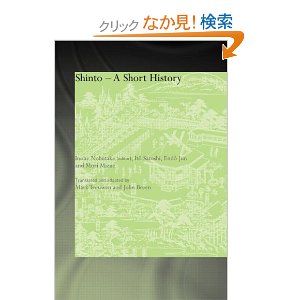
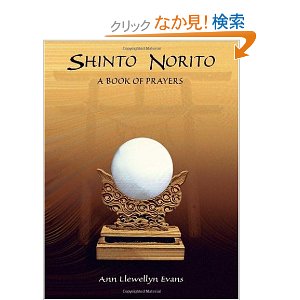 transcription of the Japanese into roman script, so that the prayers can be read out with their original sound. The intention is to preserve the kotodama (literally, word spirit). As Yukitaka Yamamoto, grand priest of
transcription of the Japanese into roman script, so that the prayers can be read out with their original sound. The intention is to preserve the kotodama (literally, word spirit). As Yukitaka Yamamoto, grand priest of



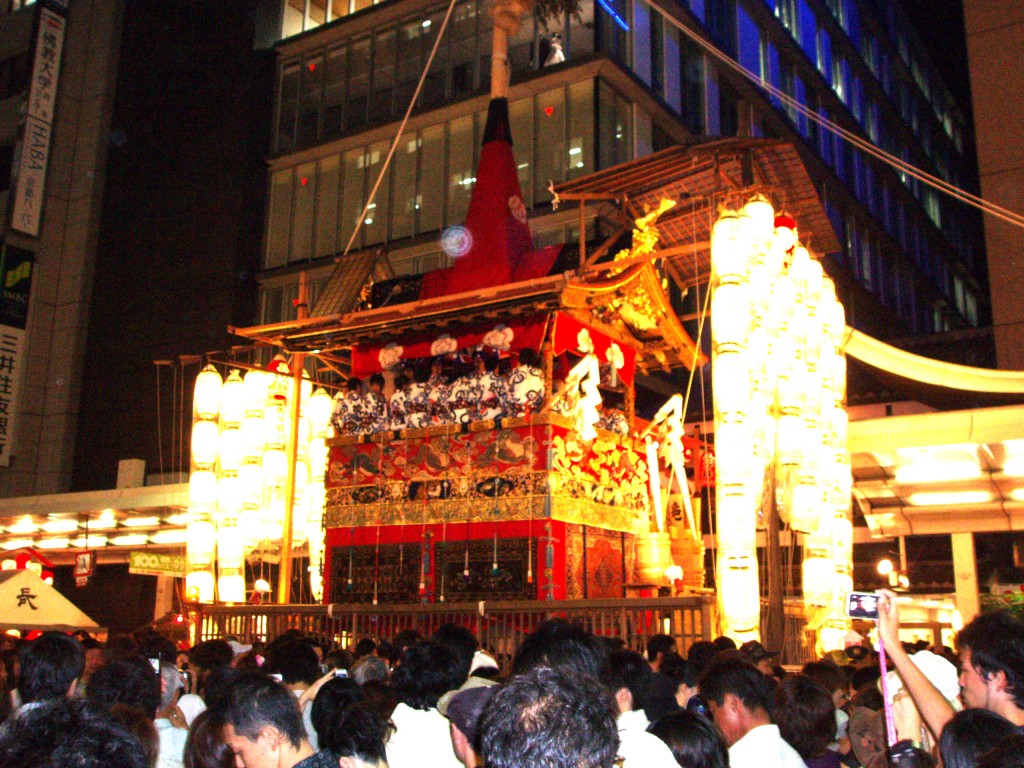
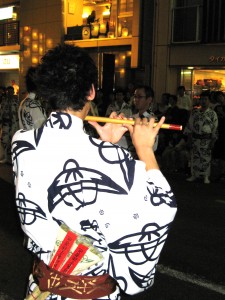 for the occasion and the atmosphere is like one huge street party. Tradition mixes with modernity as ‘Gion bayashi’ music pervades the air while girls in yukata shout into their mobile phones and snack on fast food. This year male yukata seemed more prevalent than previously, and as the weather was good the streets were packed. The atmosphere is wonderful, with everyone friendly and in good spirits. Along with the traditonal fare are a few wild surprises….
for the occasion and the atmosphere is like one huge street party. Tradition mixes with modernity as ‘Gion bayashi’ music pervades the air while girls in yukata shout into their mobile phones and snack on fast food. This year male yukata seemed more prevalent than previously, and as the weather was good the streets were packed. The atmosphere is wonderful, with everyone friendly and in good spirits. Along with the traditonal fare are a few wild surprises….